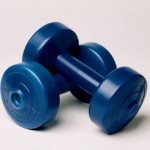 It is the time of year when the temperature encourages people to lace up their sneakers and every weekend boasts a run (or two.) Planning to run a marathon, half marathon, or even a 10K requires training and proper maintenance for your body. For beginners it is especially important to begin a regimen and educate yourself on best habits.
It is the time of year when the temperature encourages people to lace up their sneakers and every weekend boasts a run (or two.) Planning to run a marathon, half marathon, or even a 10K requires training and proper maintenance for your body. For beginners it is especially important to begin a regimen and educate yourself on best habits.
Listen to your body. It is not how fast you run today, or even how far; it is about how many years you can enjoy running. For older runners or those with injuries, don’t run if it hurts. Give your body a chance to heal. Take advantage of the days you feel good and go on longer runs, push yourself, and seize the opportunity.
Run with a partner that can encourage and motivate you. Training with others with a similar interest and passion for running means you can train for events together, swap training techniques, engage in a little friendly competition or maybe even participate in a relay as team.
Hydration. Water is obviously integral to successful and healthy running, but even more so in extreme conditions of heat and altitude. Hydrate before your runs by drinking water right before, hours before, and even days before. You will recognize hydration by (almost) colorless urine. Drink water consistently rather than consuming more than 16 oz. before a run itself. Drinking enormous amounts of water prior to a run can cause issues so hydrate often rather than in huge doses. If water stops are not on your runs- and even if they are- supplement with a water belt.
Food Intake. Eat your normal balanced breakfast a couple hours before a strenuous run; normalcy is easier for your body to digest. Stay away from heavy meals, and opt for oatmeal and bagels and bananas. Don’t forget a dose of protein as well to keep those muscles happy.
Dr. Sasse founded Western Bariatric Institute and iMetabolic. He is also the author of numerous books and a featured speaker nationally in the field of weight loss.
 Subscribe
Subscribe


